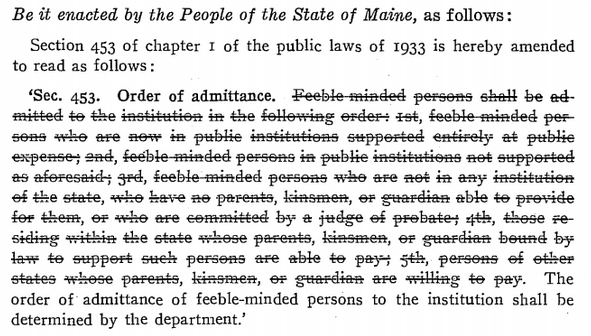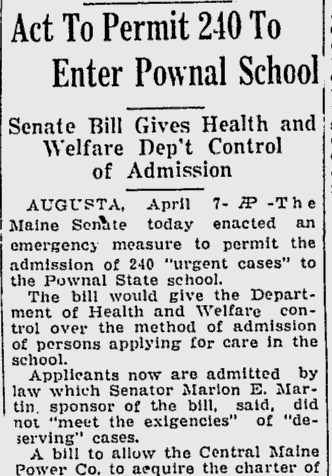While changes were being made to the administrative structures of Maine’s institutions, the Pownal State School was undergoing an expansion as well. An increase in beds and buildings was championed by a new superintendent, Dr. Stephen E. Vosburgh, who was hired in 1919 and served for 18 years.
Dr. Vosburgh was proud of the modern 110-bed hospital built in 1931 at the Pownal State School that had facilities for all types of issues – eye, ear, throat, X-ray, dentistry, surgery, and “laboratories for research into every channel of feeblemindedness.”
Dr. Vosburgh, according to the book Voices of Pineland by Stephen Murphy (2011), “was a committed eugenicist, promoting wholesale segregation, marriage restrictions, institutional expansion, minimal parole, and ushering in Maine’s sterilization era.” Vosburgh said in an 1832 speech that the hospital was even performing sterilizations “to prevent reproduction among sub-normals” – a term that he said was replacing “feeble minded.” “Feeble minded” had been dropped from name of the institution in 1925.
Superintendents Vosburgh, (1919-1937) and Dr. Nessib S. Kupelian, (1938-1953) believed – as did many others – that the majority of the feeble minded had “inherited” the condition and, without being segregated from the general population, and, in some cases, sterilized, the “problem” would only increase.
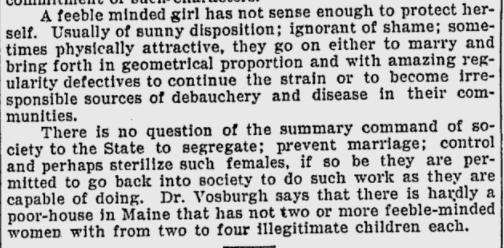
With a desire to expand the resources of the institution to segregate people with developmental disabilities, Vosburgh garnered $200,000 in 1931.
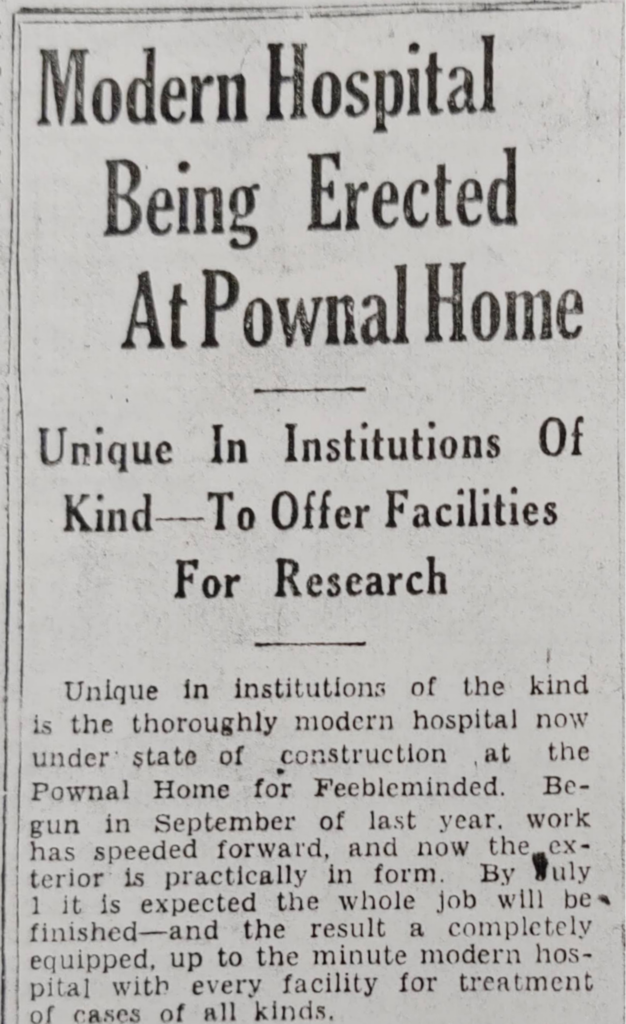

Dr. Vosburgh claimed that the need for the institution, as shown by the long waitlists of people whose families desperately wanted to place them at Pownal, demanded funding of more dormitories, housing for employees, and other improvements.
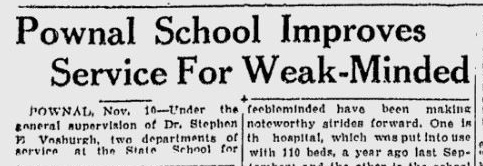
Kupelian, head of the new hospital before he became superintendent, oversaw the sterilizations.
In 1932, the school had 50 buildings 800 “inmates” who performed labor that made the institution largely self-supporting, he reported.

Even in the midst of the Great Depression, the Legislature was convinced of the need for expansion at the School and other institutions, and in 1936 approved $2 million in bonds to, among other things, build new dormitories at Pownal that would house an additional 300 residents.
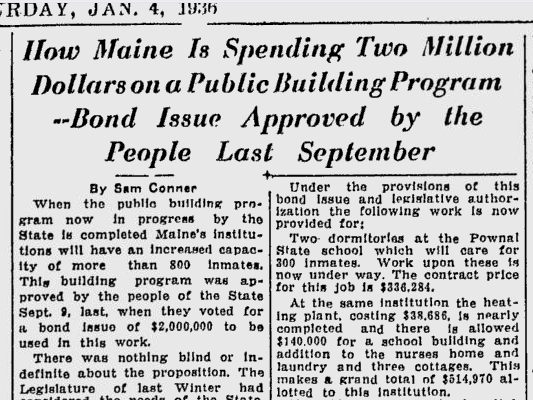
These “improvements” made costs rise at a time when state governments were trying to keep budgets low. Waiting lists persisted and operating costs went up, with increased patient loads.
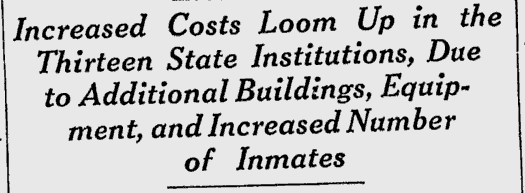

Over the next 20 years, there would be repeated calls for more beds at the institution, continued wait lists, and complaints of overcrowding. The answer to the institution’s many problems was always to expand the institution, and in 1937 the Department of Health and Welfare was given control over admissions.
